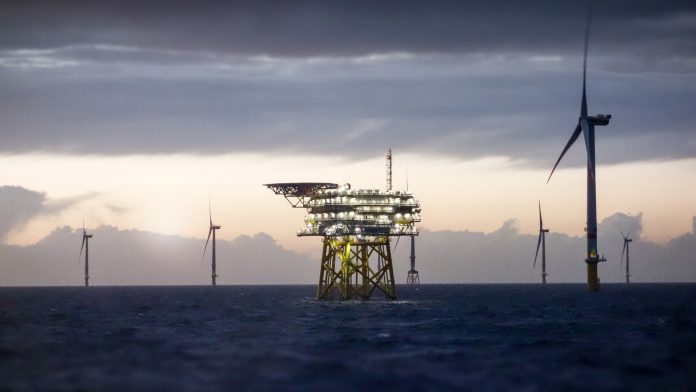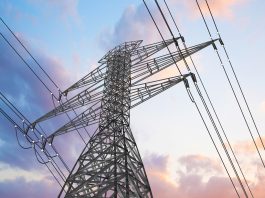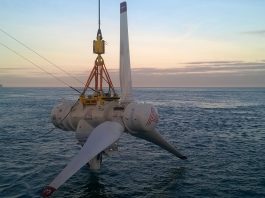Giovanni Corbetta, Managing Director at James Fisher Marine Renewables, takes a step back for a big picture look at the two sides of the energy transition (ET), oil and gas.
What does E.T., the 1982 American science fiction film, have in common with the energy transition, the seismic structural shift redressing the demand for a more sustainable energy system? On the surface, not a lot. Initials aside, tales of a suburban family befriending a stranded extra-terrestrial seem like a far cry from the current pressing and very real challenge of reducing our reliance on fossil fuels as an energy source.
However, as tempting as it is to place oil and gas and renewables in their respective boxes, let’s take a second to look at the bigger picture. What if, instead of focusing so much on the differences, we take a look at what connects these two together? Perhaps to the chagrin of the radical supporters on both sides of the spectrum, is there something to be gained from searching for the similarities?
Much like E.T. and Elliott, there is a binding force that becomes difficult to ignore.
Offshore renewables, and their infrastructure as we know it today, would simply not exist if it was not for oil and gas. The technology propelling us towards a green power future exists because of the decades of innovation that has come before. That is not to say that the renewables sector does not have its own bespoke technology driving development – in fact, it is one of the fastest growing, most digitally literate industries on the planet. But when it comes to the rapid deployment of cleaner offshore energy, oil and gas has a lot to answer for.
With a long-standing legacy in offshore construction, James Fisher has had the privilege of being at the forefront of ocean innovation since its inception 174 years ago. From the transportation of coal, through to supporting the construction and operations of offshore wind turbines, energy has always been at the centre of its activity. So, we know from experience that there is nothing to fear from this next era of change.
Oil and gas platforms out in the North Sea are not suddenly going to pull up and head back to shore to make way for their turbine replacements – for one, decommissioning is an expensive process. These costs vary region to region, but a comparison last year from Rystad estimated that removing a steel platform in the North Sea would cost around $22.35m – and that is excluding its subsea infrastructure. South East Asia rate approximations are a little more palatable at $9.08m, but a significant amount, nonetheless.1 Secondly, there simply isn’t the infrastructure to run the world entirely off of renewable resources…yet. Current growth rates of 15-20% indicate that this could be a reality by 2050.2 So, with the case for the energy transition well and truly made, and the world (mostly) on board, there is a universal responsibility to pull together and ensure that it happens in as safe, sustainable, and swift a way as possible.
As oil and gas companies of all sizes begin dipping their toes in the proverbial renewables pool, they are bringing with them a set of processes, technology, and expertise that, for their clean energy counterparts, has proven to be useful on more than one occasion.
Challenges
One example is the trend for offshore wind developers to start building further afield in order to expedite construction. This has a number of benefits. For one, permitting disputes are all but wiped out – the further offshore a wind farm is located, the less likely it is to encroach on a prized surf spot or disrupt the view from a wealthy world leader’s golf course. However, building offshore has its own unique set of challenges – challenges that the oil and gas sector have been navigating for decades.
Building in deeper waters requires a different style of engineering – at depths where it becomes unfeasible for fixed foundations, turbines need to float. While there has been much talk about the viability of these floating farms, they are now widely agreed to be the solution to ambitious offshore wind targets. And much of the technology needed for these farms, while described as new, is not a million miles away from floating oil and gas platforms, with the first floating production storage and offloading system (FPSO) built in 1977 on the Shell Castellon field in the Spanish Mediterranean. With a floating platform – everything is more dynamic which means that tasks such as anchoring the platform in deep water and managing the export cables are subject to significantly more forces than traditional near-shore windfarms.
It is perhaps unsurprising then that the bids submitted in July for the world’s first large-scale floating offshore windfarm, located in the North-East of Scotland, have come from Royal Dutch Shell in partnership with Scottish Power.3 This combination of expertise, an oil and gas veteran with decades of North Sea wrangling under its belt, partnering with a firm that is about to become the UK’s largest offshore wind developer, sends a pretty powerful signal to the global energy circuit.
Combined oil and gas and renewables projects
It also signifies the start of a potential growth trend – combined oil and gas and renewables projects. We are already seeing some oil and gas platforms that are themselves powered by renewables, so it is not too much of a stretch to envision the opposite. Perhaps a wind farm that uses an active offshore oil and gas platform as its offshore hub, or a carbon capture and storage project co-located with wind.
As mentioned, while the overall consensus is that the energy transition is a necessary and universally net-positive move, there is still an undercurrent of unease when we are essentially asking an entire industry to cease many of its existing operations – operations which provide a livelihood for many families globally. Combine this with a post-pandemic pessimism and you can understand how, for some, the outlook is a little bleak.
However, as experts such as James Fisher can attest to, while perhaps diametrically opposed politically speaking, the jobs in oil and gas and renewables are not mutually exclusive. The maintenance requirements for a floating oil and gas platform are very similar to a floating wind farm – checking connections, cleaning, valve replacement. Looking slightly further afield, pilots of helicopters and vessels will still be very much in demand, as will commercial divers and third-party contractors of other offshore services. Now, granted, oil and gas platforms do not have blades. However, with the first field of floating farms unlikely to come online until 2023, there is plenty of time to plan and finesse training and qualification programmes.
Job creation
In the IEA’s recent net-zero pathway report, they estimate that the fossil fuel production job losses equating to 5 million could be offset by the creation of 14 million new positions by 2030.4 This is by no means insignificant and, while only time will tell if there is a sense of optimism to be found in the ‘green recovery’ – job creation, particularly in times of uncertainty, is a welcome respite to those who have lost jobs during the pandemic. This will almost certainly extend to those oil and gas professionals whose skills and knowledge are vital to the acceleration of this emerging sector.
As with an extra-terrestrial landing in a domestic setting, it is natural to focus on the differences – the ‘us and them narrative is all too familiar’, and one which we all defer to. But searching for common ground is also pervasive. When we look at the energy sector as a whole, its connectedness in the face of a disjointed and challenging political backdrop – there is a symbiosis in this narrative of reliance, empathy, and connectedness.
Renewables have landed – and, far from phoning home, they are with us to stay. The reality is that demand for oil and gas will start to wane and, in recognising this, we are already seeing big oil and gas majors prepare for this shift. For those of us lucky to work across both sectors, we see the benefits of this cross-industry collaboration. The time to fear change is over – instead, we should look to harness the similarities and work towards a common goal of bolstering our global energy system for a better, more sustainable way of life.
References
- www.rystadenergy.com/newsevents/news/press-releases/why-decommissioning-a-platform-in-northwest-europe-costs-so-much-more-than-in-southeast-asia/
- https://carbontracker.org/reports/the-skys-the-limit-solar-wind/
- www.shell.co.uk/media/2021-media-releases/scottishpower-and-shell-bid-to-bring-large-scale-floating-windfarms-to-uk-waters.html
- www.iea.org/commentaries/the-importance-of-focusing-on-jobs-and-fairness-in-clean-energy-transitions
Giovanni Corbetta
Managing Director
James Fisher Renewables
+44 (0) 1229 615 400
Tweet @JamesFisherPLC
www.james-fisher.com
Please note, this article will also appear in the seventh edition of our quarterly publication.









